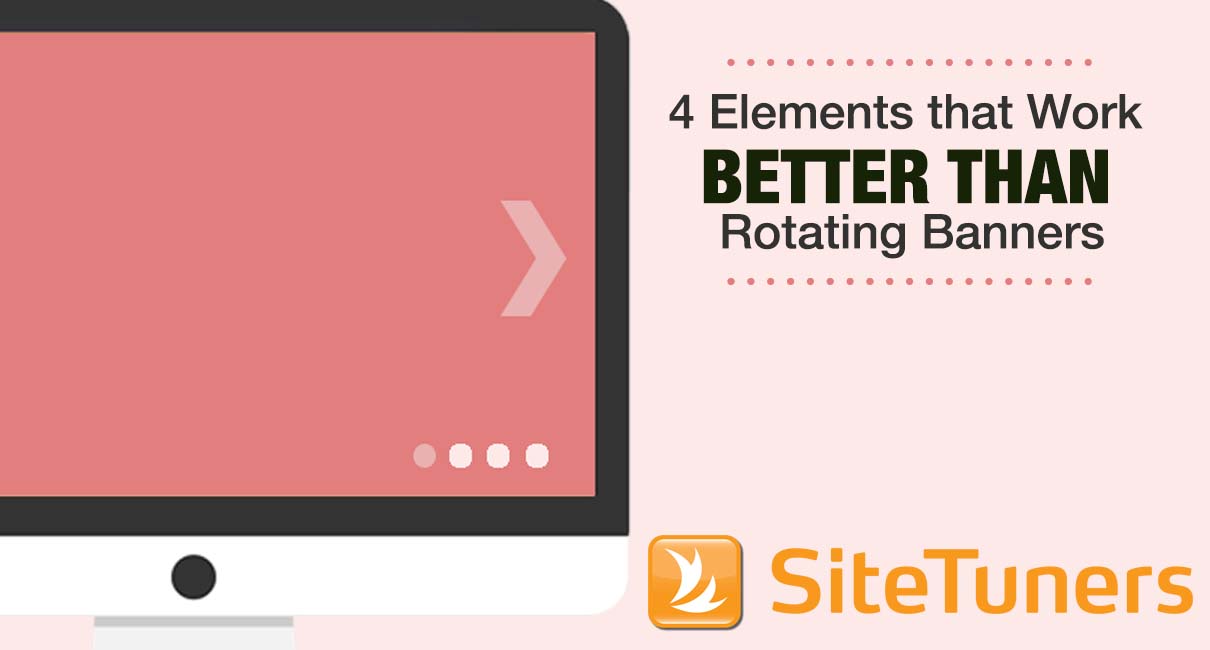
There’s tons of research and a slew of articles about why the two items don’t work well, but there’s less of a discussion around what can replace them IF they go away. Should you use the extra real estate to feature products on a static banner?
And really, the answer is, no. Now, let’s qualify – if you’ve done a ton of personalization, you can go ahead and show a featured product. But the caveat is, you should only be showing it to people who have expressed interest in it before, whether you’re using remarketing, or saved sessions, or some other technology. Otherwise, you should be presenting the visitor clear choices, letting them match what they need, not shoving a high margin product on their screens off the bat.
1. Clear Headline
So if you can’t use that space for featured product, what should you put at the top?
One of the best things you can use it for is a headline. Your homepage has to tell visitors what it’s about. Without thinking too much, visitors should understand who you are and what pain points you solve for them.
- The headline should be short and noticeable
- There should be space around it, so that it pops out
- The font size and color should be used to indicate that it’s higher up on the visual hierarchy than other elements of the page
2. Visual Options
You should create a small number of clear and distinct categories regardless of whether you have a carousel banner or not. However, without a rotating banner in the way, you have more options for the home page. Without featuring a particular product, you can visually show the most important tasks or categories.
If you decide to show categories, show 7 or less, and don’t tie them directly to a product. You can use a collage of disparate items or use other visual devices to indicate something is a category. There should be boundaries – delineate the sides of the page, constrain the header, make the sides boring, and help visitors focus on key content.
3. Trust Elements/ Social Proof
With more space to work with, you have no excuse not to have the trust elements and social proof above the fold.
- You can use logos of well known clients
- You can use the number of people who have taken a particular action on your site
And you can balance those elements as required, but the important thing is that visitors shouldn’t have to dig for these – they should be readily available.
4. Calls-to-Action
Just because you don’t have a featured product doesn’t mean you shouldn’t have a call-to-action.
Understand what visitors are trying to do most on your site. You can use on site search analysis, you can use online surveys, or you can analyze behaviors on your analytics package of choice to get this, but you should have an understanding of what people are trying to do on your site.
From there, you need to find your common top of the sales funnel and bottom of the sales funnel actions, and optimize calls to actions for those.
CTAs have pretty well understood rules:
- They should use a different color from the rest of the theme to help them pop out
- Their visual affordance should be high so they look clickable
- They should be actions following the “I want to …” statement of the visitor (in other words, use “Get a free quote” instead of “Submit”)
Prioritize – Ditch the Rotating Banner
Home pages are typically very difficult things to balance, making rotating banners somewhat attractive to teams that can’t reach a compromise. After all, you get to show everything. But you can’t make the user pay attention to everything – prioritization is key to matching their intent. And once you have prioritized, the four items described here can work together for coherent messaging, taking away problems like the lack of user control, and ensuring you are that much closer to usable design.
Work with the best!Kickstart your optimization with a 90-minute Website Review from the pioneers in conversion rate optimization. Our CRO experts at SiteTuners can help diagnose your website from a conversion and usability perspective. |

